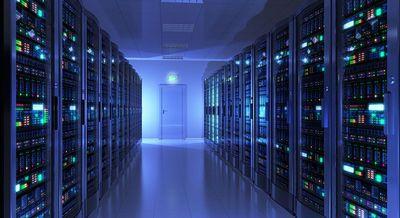
What are Data Center Tiers?
A data center is a physical location that houses specialized computing equipment and servers for the purpose of managing and accessing heavy amounts of data. A data center is also called a ‘computer room’. Any individual, organization, or body that needs huge data to be stored, transferred, created, or used for one purpose or another needs a data center. Data centers are usually owned by web hosting services for the purpose of handling the server needs of their clients. Some enterprises prefer the option of owning and maintaining their data centers.
A data center tier system represents a classification system for data centers. This classification is usually based on the type of equipment and infrastructure the data center has. These tiers are grouped and ranked according to how simple or complex the infrastructure is.
Data Center tiers are usually classified into one of any of the four (4) classifications as classified by the Uptime’s Institute tier classification system. This classification is an industry standard.
In classifying these data centers, the Uptimes Institute also takes into cognizance the IT operations reliability, and how tight their systems security is, among many other factors
Each data center’s classification system would be discussed below:
Tier 1
The tier 1 data center is the simplest and the lowest of all the data center classifications. It is mostly used by small businesses that carry out small-scale operations. The tier 1 data center has the following features:
- 99,671% Uptime; The tier 1 data center has an uptime of 99,671% which is the lowest any data center tier offers.
- cheap services; This is another reason why tier one data center is best suited for small businesses with the most basic server needs. It offers the lowest cost server hosting because it lacks the necessary redundant hardware to maintain. It’s suitable for small companies with low data needs that are also working on a strict budget.
- no redundancy; This means that there are no backup mechanisms. Big companies which rely heavily on data accessibility would run a risk by using the tier 1 data center system for this reason. This is because they are very likely to lose a lot of data should any sort of system failure occur.
- downtimes of approximately 28.8 hours per year;
- dedicated cooling equipment.
Tier 2
Ranking from lowest to highest, the tier 2 data center facility comes second. It’s the next best after the tier 1 data center. The tier 2 data center facilities offer basically the same features as tier 1 with just a slight improvement of some features:
- 99,742% Uptime;
- partial redundancy; There is a slight improvement in this area. While tier 1 has no redundancy equipment whatsoever, some components in the tier 2 data center system can be taken for maintenance without experiencing downtimes. However, they can’t do the same with their servers. Their servers may go offline if maintenance needs to be done;
- downtimes of approximately 22 hours per year.
Tier 3
The tier 3 data center facility comes next after the tier 2 data center system. Many businesses today can run conveniently on a tier 3 data center facility. As expected, it’s a slight improvement from the tier 2 data center facility especially in uptime and redundancy and a mode sophisticated facility. It has the following features:
- 99,982% Uptime;
- redundancy; The servers in this tier system are backed up by 2 distribution paths. This means that should a distribution path go offline, the servers can still run on the other distribution path without going offline. Their server equipment also has many power sources that guarantee up to 72-hour power outage protection;
- less than 1.6 hours of downtime per year.
Tier 4
The tier 4 data center facility is the highest in the tier classification system. It has the most sophisticated infrastructure compared to other tiers and is used by very large companies with heavy reliance on data accessibility. The tier 4 data Center facility has the following features:
- 99,995% Uptime;
- redundancy; Tier 4 is regarded as fully redundant with multiple distribution paths, cooling systems, power sources and generators to ensure that the servers continue to run perfectly no matter the errors in the system. It is described as ‘error tolerant’ and has up to 96-hour power outage protection.
- 29 minutes downtime per year;
Conclusion
Businesses in today’s world need to maintain a certain level of online presence to drive brand visibility and to perform other functions. To achieve this, they would have to host their businesses on online hosting services. For the website to run, certain internet equipment like servers is required on-premise or off-premise.
Servers could be very difficult to maintain and would require some sort of specialized knowledge to operate. To avoid the expenses and trouble involved in maintaining servers, these businesses opt to choose a web hosting service to cater for their server needs for a fee.
These web hosting services have a data center that stores all their server equipment. These data centers are categorized into 4 tiers based on the kind of facilities they have, with tier 1 having the lowest facilities, and tier 4 having the most sophisticated ones.
Everyone wants a reliable data center to work with. They want to be assured of their data centers able to provide the best quality servers available. This is why it is very important for them to take great care in choosing the best datacenters that suit their needs based on the standard 4-tier data facility classification.
